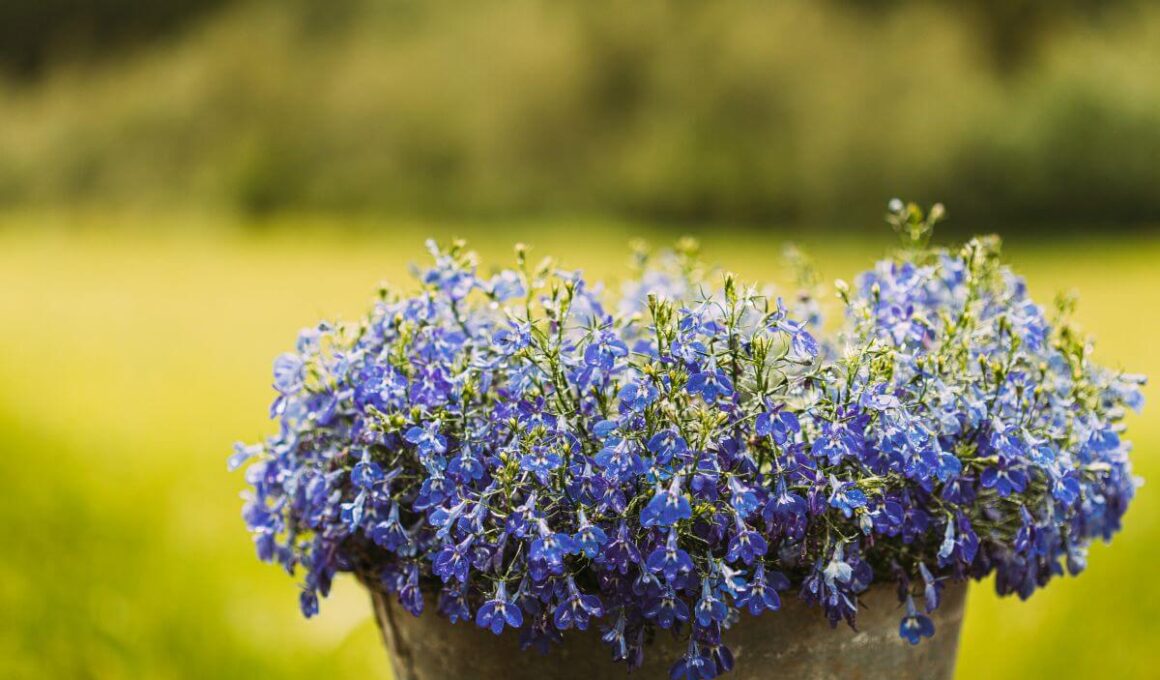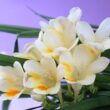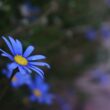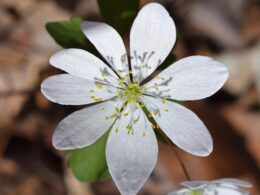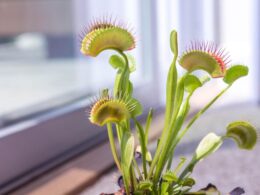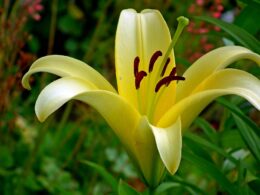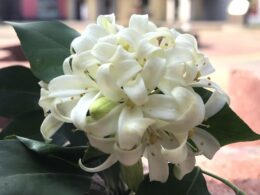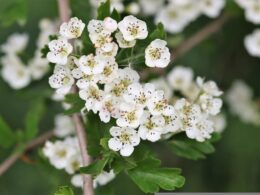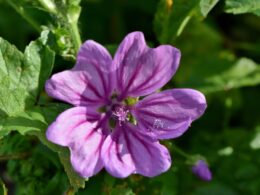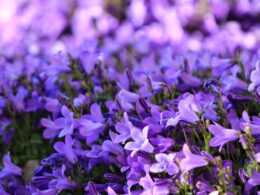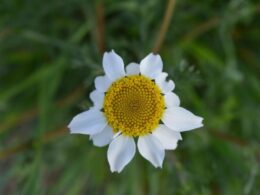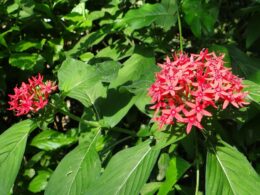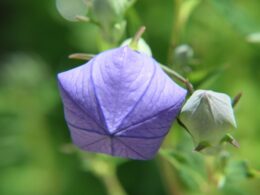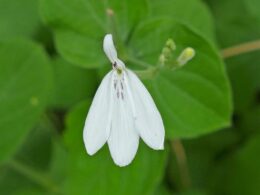The Lobelia Flower – Basic Information
Lobelia belongs to the family Campanulaceae, which also includes such well-known plants as bellflowers (Campanula spp.). The genus was named after Belgian botanist Matthias de Lobel (1538-1616). Lobelia is a genus of flowering plants that includes more than 400 species.
Lobelias are annual or perennial herbs, shrubs, and climbers. They have alternate, simple leaves and tubular or bell-shaped flowers that are typically blue or violet. Many species of lobelia flowers are cultivated as ornamentals, and some are used in traditional medicine.
Lobelia Flower Appearance
The genus Lobelia includes a wide range of big and tiny annual, perennial, and shrubby species from a variety of environments, with both hardy and delicate variants. They are known for their colorful flowers which can be blue, pink, purple, or white.
Some lobelias appear to be completely different. They all have simple, alternate leaves and two-lipped tubular flowers with five lobes, but they vary widely in appearance. The upper two lobes may be upright, while the lower three lobes may be spread out. Because of their beauty and intensity of color, many species bloom plentifully and are popular ornamental plants.
Lobelia Flower Habitat and Distribution
The vast majority of these are found in the tropical and subtropical regions of Africa, Asia, and Oceania. Some species are native to temperate areas, including Europe and North America. Lobelia species are found in a wide range of habitats, from swampy areas to mountain slopes. They typically prefer moist soil and full or partial sun.
Varieties of Lobelia Flowers
The lobelia flower is a beautiful bloom that comes in many varieties. The most popular type of lobelia is the cardinal flower, which is a deep red hue and attracts hummingbirds. Another popular variety is the blue lobelia, which has blue flowers. There are also pink, white, and purple varieties of lobelia flowers. Some of the most popular lobelia flowers include:
- Lobelia inflata, also known as Indian tobacco, is a North American native that was used by Native Americans for medicinal purposes. The plant contains lobeline, a chemical compound that has stimulant and hallucinogenic effects.
- Lobelia chinensis is a Chinese native that is widely cultivated as an ornamental. It is sometimes known as Chinese lobelia.
- Lobelia erinus, or garden lobelia, is a popular ornamental plant that is native to Southern Africa. It is often used in bedding and container gardens.
- Lobelia cardinalis, or cardinal flower, is a North American native that has been widely introduced to other parts of the world. It is a popular ornamental plant and has also been used in traditional medicine.
- Lobelia tupa, or devil’s tobacco, is a South American native that was used by the Incas for ceremonial purposes. It is a poisonous plant that can cause vomiting and diarrhea.
- Lobelia kalmii, or Kalm’s lobelia, is a North American native that is found in damp woods and meadows.
- Lobelia gibbosa is a herbaceous plant that is native to Western Australia.
Lobelia Flower Growing Conditions and Lobelia Care
Lobelia flowers are beautiful additions to any garden, and with the right care they can thrive for years. This guide will provide you with all the information you need to make sure your lobelia flowers are happy and healthy.
Soil
Lobelia flowers are not picky when it comes to soil type, but they do prefer well-drained soil that is high in organic matter. If your soil is heavy or clay-like, consider amending it with peat moss or compost before planting. Lobelia also does well in sandy soil. PH levels between 5.5 and 6.5 are ideal for lobelia.
Temperature
Lobelia flowers are native to subtropical and tropical regions of the world. In these regions, they are typically found growing near bodies of water. They prefer warm temperatures and lots of moisture.
In cooler climates, lobelia flowers can be grown as annuals. They will not tolerate frosty conditions, so it is important to plant them after all danger of frost has passed. They also prefer warm weather, so they may not bloom as profusely in cooler climates.
If you live in a region with very hot summers, you may need to provide some afternoon shade for your lobelia plants. This will protect them from the intense heat and help them to continue blooming throughout the summer months.
Watering
Lobelia flowers need moist soil to grow well and will often wilt if the soil is too dry. It is important to water lobelia regularly, especially during hot weather. If the plants are wilting, give them a good drink of water, and they should recover within a few hours.
Fertilizing
Lobelia flowers require moist soil conditions in order to thrive. An all-purpose fertilizer can be used to provide the nutrients they need to grow and bloom. Deadheading spent blossoms will encourage the plant to produce more flowers. Annual varieties do not require deadheading.
Growing Lobelia: How to Plant Lobelia Flowers?
Lobelia flowers are easy to grow from seed. The plant prefers full sun to partial shade and moist to wet soil conditions. The plant does not require much maintenance. To grow lobelia flowers from seed, sow the seeds in a sunny location in well-drained soil. Cover the seeds with 1/4 inch of soil and water them well. The seeds will germinate in 14-20 days. Once the seedlings appear, thin them out so that they are spaced 4-6 inches apart. Water the plants regularly and fertilize them monthly.
Lobelia Plant: Common Problems
While they are relatively easy to grow, they can sometimes be affected by common problems such as crown rot and mites. Mites are tiny spider-like creatures that can cause damage to the leaves of lobelia plants, causing them to turn brown and become covered in webbing. If you think your plant might be affected by mites, it is important to inspect the underside of the leaves for signs of them and to treat the plant with an appropriate insecticide.





